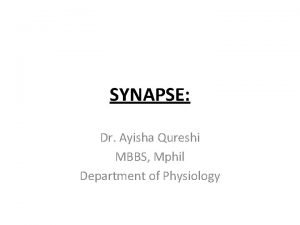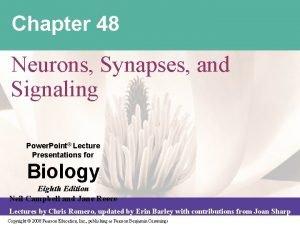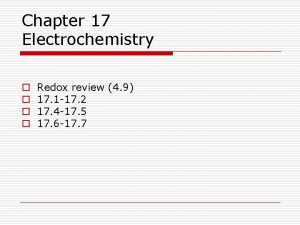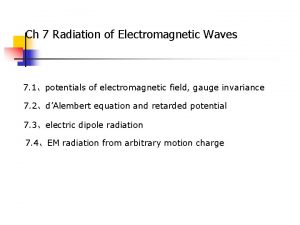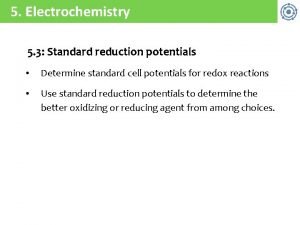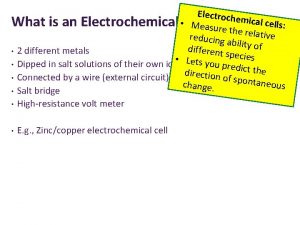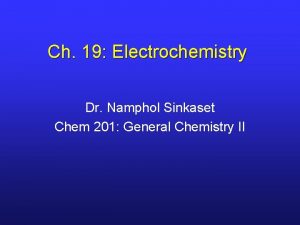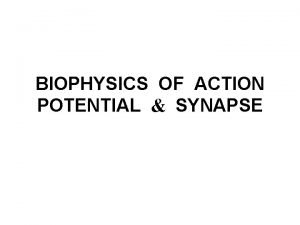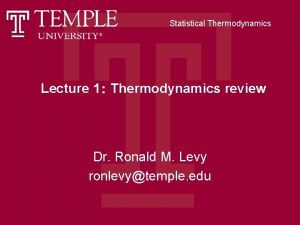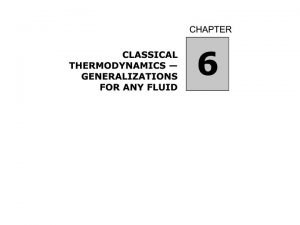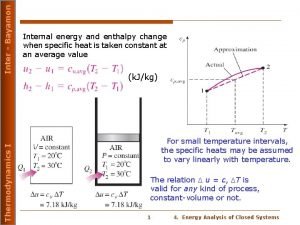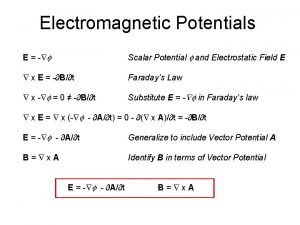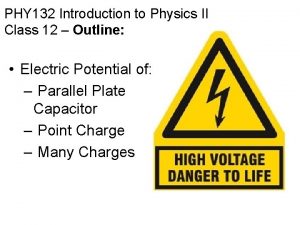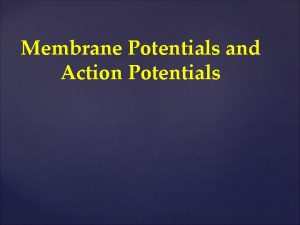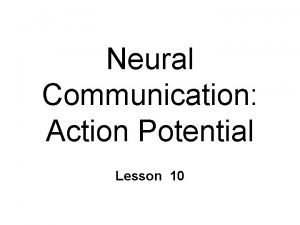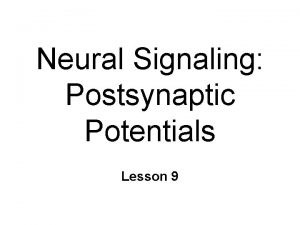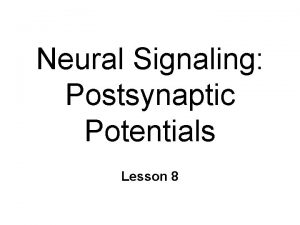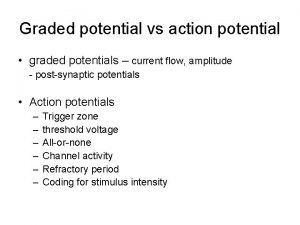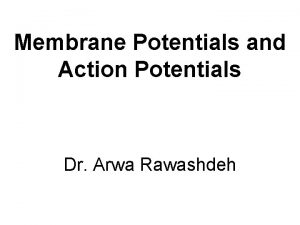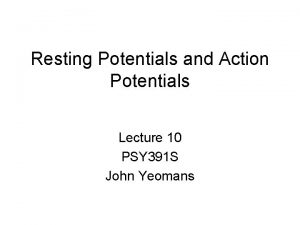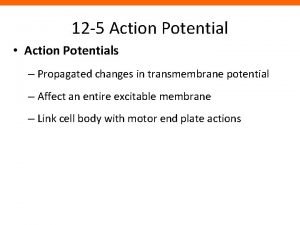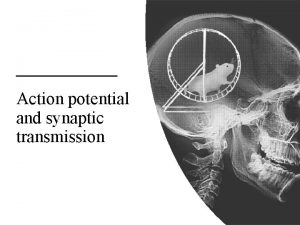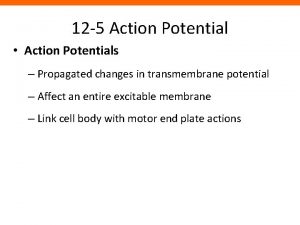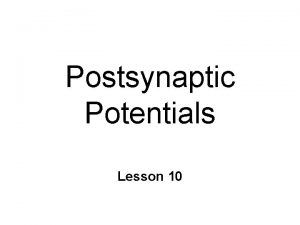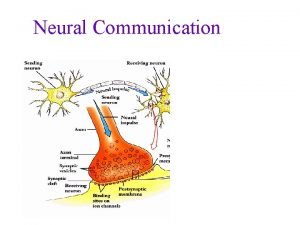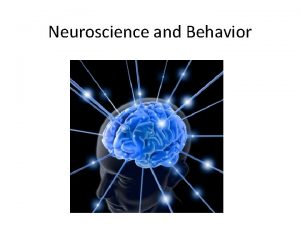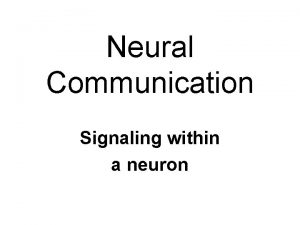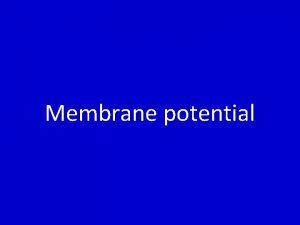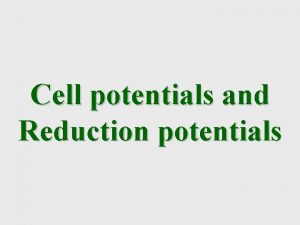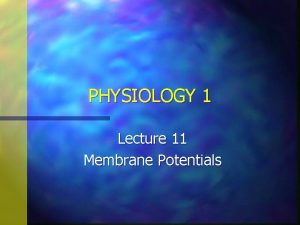Neural Communication Action Potential Lesson 11 Action Potentials























- Slides: 23

Neural Communication Action Potential Lesson 11

Action Potentials Large and rapid change in membrane potential n electrically-gated channels n EPSPs l threshold potential n Occurs in axon l triggered at axon hillock ~ n

axon hillock

AP Characteristics Voltage-gated channels n All or none n Slow n Non-decremental n Self Propagated l regenerated ~ n

+40 0 Vm -55 -65 -75 Time

+40 0 Vm -55 -65 -75 Time

+40 0 Vm -55 -65 -75 Time

+40 0 Vm -55 -65 75 Time

+40 0 Vm C & E gradients drive Na+ into cell Depolarization Na+ influx -55 -65 -75 Time

+40 0 Vm Depolarization Amplitude = 105 m. V - 65 m. V to +40 m. V Na+ influx -55 -65 -75 Time

+40 0 Repolarization K+ efflux Vm -55 -65 -75 Time

+40 0 Afterhyperpolarization Vm -55 -65 -75 Time

Refractory Period after AP l won’t fire again l relative & absolute n Relative l during after hyperpolarization l requires greater depolarization ~ n

Relative Refractory Period +40 0 Vm -55 -65 -75 Time

Absolute refractory period Na+ channels deactivate l will not trigger AP l must reset n Ball & Chain Model ~ n

Na+ channel deactivation

Na+ channel deactivation

Frequency Code Pattern = Intensity of stimulus l frequency of APs n Place = type of stimulus l Visual, auditory, pain, etc. l Brain area that receives signal l Doctrine of Specific Nerve Energies ~ n

FREQUENCY CODE Weak stimulus 1. Moderate stimulus 2. Strong stimulus 3.

Saltatory Conduction Myelinated neurons l oligodendroglia & Schwann cells n Transmit long distances l APs relatively slow, regenerates l EPSPs - fast, decremental n Saltatory: combines both types of current l speed without loss of signal ~ n

Saltatory Conduction Nodes of Ranvier l action potentials n Myelinated l like electricity through wire l decremental but triggers AP at next node n Safety factor - trigger AP across 5 nodes l. 2 - 2 mm apart n larger neurons farther apart ~

Saltatory Conduction Nodes of Ranvier

PSPs n Graded l n n n l n All-or-none n short *10 -100 msec chemical-gated passive spread l APs Summation longer duration l vs instantaneous decremental l n n 1 -2 msec voltage-gated propagated l l slow nondecremental
 Graded potential vs action potential
Graded potential vs action potential Nerve action potential
Nerve action potential Characteristics of graded potential
Characteristics of graded potential Graded vs action potential
Graded vs action potential Graded potential
Graded potential Source of bioelectric potential isin nature.
Source of bioelectric potential isin nature. Transmission across a synapse
Transmission across a synapse Intubating dose succinylcholine
Intubating dose succinylcholine Axon hillock
Axon hillock Action potential resting potential
Action potential resting potential Function of synapse
Function of synapse Postsynaptic potentials
Postsynaptic potentials Standard reduction potential table
Standard reduction potential table Lienard-wiechert potentials
Lienard-wiechert potentials Standard cell potentials
Standard cell potentials Electroch
Electroch Use the tabulated half-cell potentials to calculate
Use the tabulated half-cell potentials to calculate What are electrical synapses
What are electrical synapses U=ts-pv
U=ts-pv Maxwell relations
Maxwell relations Gibbs free energy
Gibbs free energy Cv and cp relationship
Cv and cp relationship Scalar magnetic potential
Scalar magnetic potential Mastering physics
Mastering physics










